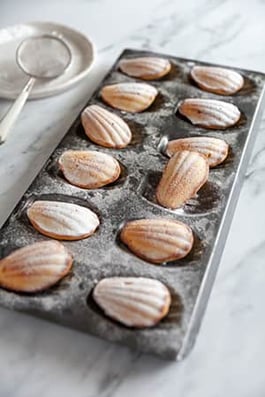Intro
The world of injection molding has a lot of different phrases that might make no sense to the everyday customer. Shops use phrases like multi-cavity, family molds, MUD inserts, and mold inserts — but, what do they mean?
In this guide, we’ll pull back the curtain and explain some of the more common injection molding terms. As a result, you’ll be better equipped to talk with an injection molding shop and get exactly what you’re looking for.
What Is a Multi-Cavity Mold?
As the name suggests, a multi-cavity mold is a mold that has a number of cavities in it. For reference, the mold is the part where you pour in your molten plastic, and the cavity is the hole that reflects the negative of your part. When the cavity fills and cools, you have a functional unit.
With injection molding, the upfront costs for tooling can be very expensive. One way to minimize the impact of this price is to have a few different cavities made in a single mold. This is the concept behind multi-cavity molds. If you can manage two cavities in one mold, you can essentially cut your tooling cost in half (since you get two cavities for roughly the price of one mold).
The tooling will be more expensive for a multi-cavity mold, but it’s always less expensive than the alternative of buying separate single-cavity molds. The other benefit is that a single mold can create multiple units at the same time. Subsequently, the injection molding machine can create units at double the rate.
It’s worth noting that multi-cavity molds, by definition, need to be identical. In other words, if you have four cavities in one mold, all four cavities need to be the same unit. After filling and cooling this mold, you’ll be left with four of the same product. If you have four different unit cavities in one mold — meaning that you make four different products each time — then it’s not a multi-cavity mold, it’s a family mold.
For smaller parts in larger molds, you can fit more than just two cavities. We’ve made molds that have double-digit cavities. Just like that, a single mold can now create parts 20 times faster at a lower cost-per-unit rate.
When you use a multi-cavity mold, you’re saving money and time for your next production run. It’s only wise for people who need exceptionally high monthly throughput and has products that are small enough.
What are Family Molds?
As we mentioned earlier, a family mold is when you have a single tool that makes different units. Let’s say you need to make a speaker assembly that consists of six molded parts. If you can’t afford six different molds, you can use a single family mold.
Once the mold goes through the injection molding process, you’ll have the six units that you need for your speaker assembly. The key difference between this and multi-cavity molds is that family molds are for separate units in a single mold, while multi-cavity tools offer the same unit.
As a rule of thumb, you should only use a family mold if the whole assembly uses the same material and requires a certain ratio. Our example of a speaker assembly will only work if the whole thing is made out of polypropylene, for example, and you need one of each part to create a full assembly.

Explaining Mold Bases
A mold base is a catchall phrase that refers to the assembly used in the injection molder. This is the metal part that gets filled with plastic and creates your production units. Some projects can use standard, off-the-shelf mold bases, and others have to customize the base.
For a simple explanation, consider baking a cake. The cake tin is the mold base, the mix that goes in would be the molten plastic, and the oven is the injection molder. The cake tin (mold base) could be a standard cylinder shape, or it could be a decorative shape.
All About Mold Inserts
Mold inserts are a pretty interesting concept in the world of injection molding. It’s a product designed and used by a certain injection molding shop. It’s proprietary and only works on their machines. The insert is a piece that simply fits into a mold base and the plastic gets poured around it.
The insert is usually a lot less expensive than other tooling options, with a single caveat: you won’t be able to swap to a different injection molding company. The insert that you pay for can’t be carried with you. If you find another shop that’s higher-quality, faster, more responsive, or less expensive to work with, then you’ll need to buy new tools or inserts to swap to them.
Since the shop’s inserts are built to a specific base, then you’ll have to wait in line until the base is freed up. This might mean adding weeks to your turnaround times, depending on how busy the shop is.
What’s a MUD Insert?
A Master Unit Die (MUD) insert is a standardized way to injection mold. It features pre-built, stock parts that can quickly be installed and replaced in a typical process. The inserts fit into a MUD base, which is also standardized.
MUD products are great for making parts quickly that don’t require customization. The inserts and bases are typically less expensive than customized options, meaning that per-unit costs will be more favorable.
Conclusion
Now you know some of the more common injection molding terms. If you still have questions about our explanations, then reach out to us today at Rapid Axis. We are injection molding experts, and we’re fully equipped to handle your injection molding needs. Get a free quote from us today to get started.

